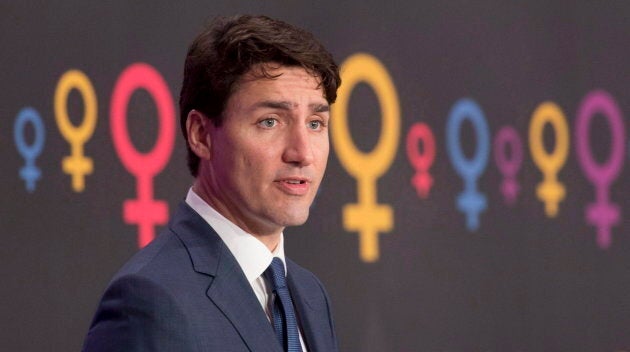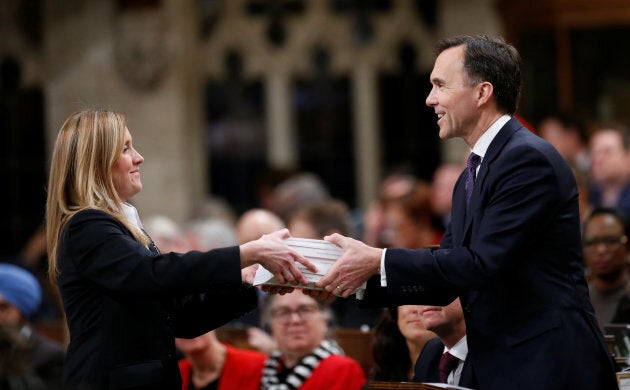The Trudeau government's adoption of the term "feminist" to describe, among other things, its budget and its approach to international assistance, requires us to look closely at the extent to which Canada is meeting feminist principles — both in policy and in practice.
A commitment to sexual and reproductive health and rights is one example, especially important in today's global political climate, of how Canada is — and isn't — walking the talk and putting its money where its mouth is.

Last year's enactment of the Global Gag Rule from our neighbours to the south opened up a whopping $8-billion global funding gap. The rule prohibits NGOs around the world receiving U.S. international aid from providing services, information, counselling, referrals or advocacy related to abortion (and, in some cases, contraceptives). In response, Canada was among the governments around the world who rallied together to defend sexual and reproductive health rights.
Until recently, though, Canada was part of the problem, not the solution, with its own version of the Global Gag Rule implemented by the Harper government in 2010. The Global Gag Rule is not only devastating in that it cuts funding to vital areas, it also exacerbates existing gaps.
Thankfully, the global movement has started to fill these gaps, with Canada taking an important place at the table. Our government took a vocal stand in support of sexual and reproductive health and rights, and made an initial $20-million commitment at the global She Decides conference to address new gaps created by the U.S. policy, which was followed by a $650-million announcement last International Women's Day for sexual and reproductive health and rights programming.
But is it enough to move the needle in the most underfunded and neglected areas?
Canada's political commitment to feminism comes at a time of financial crisis in the global sexual and reproductive health and rights movement. While gaps existed before Trump, the U.S. was once the largest bilateral donor to family planning and reproductive health, and the reinstatement of the policy has already led to the closure of clinics in low-income countries, which has been particularly difficult in parts of Africa where NGO-led clinics are the primary source of HIV and AIDS prevention and treatment, maternal health care and counseling in cases of sexual violence.
The long-overdue commitment is more than just money. It seeks to address our previous government's refusal to ensure that women and girls have agency, and the tools to make decisions about their own sexual and reproductive health. In other words, it represents a concrete move to align international assistance with feminist principles.
We know from our work in the global feminist movement that the most neglected areas are the ones where ideological approaches that aren't grounded in evidence have fuelled regressive programs and policies, specifically in the areas of abortion, feminist advocacy and comprehensive sexuality education (sex ed that recognizes the realities and human rights of young people).

The commitment is feminist in that it places women, girls, and all people and their rights at the centre of development. It recognizes that limiting access to a comprehensive package of sexual and reproductive health services is a violation of human rights. It recognizes the need to support legal and policy advocacy that advances these rights. It brings an intersectional approach to sexual and reproductive health that addresses gender equality and the contexts in which we live, our social determinants of health.
This shift in approach has been significant. But is it enough to move the needle in the most underfunded and neglected areas?
A feminist approach to international assistance requires more than just money to "fill the gaps" Canada helped to create.
Although the 2018 budget saw a small increase in development aid, this won't ensure it keeps up with inflation. Canada's overall spending in the area has steadily decreased over the years, and no new funds for sexual and reproductive health and rights were included. Without a solid commitment to increase aid spending over the long term, Canada's investment in sexual and reproductive health and rights beyond 2020 (when the $650 million runs out) will be in serious jeopardy.
A feminist approach to international assistance requires more than just money to "fill the gaps" Canada helped to create. But a feminist approach to international assistance that isn't accompanied by meaningful investment, particularly in the area of sexual and reproductive health and rights, isn't feminist.
More blogs from HuffPost Canada:
A feminist approach requires a sustained commitment beyond the next election to realize substantive change in the most neglected areas. It requires that Canada continue to be vocally supportive of sexual and reproductive health, and rights in international decision-making spaces, including the G7. It requires the creation of an institutionalized approach to sexual and reproductive health and rights within our development agency (Global Affairs Canada) through a Canadian global sexual and reproductive health and rights policy that can't be swept under the rug with a change in government. It requires modernizing government funding mechanisms so that grassroots feminist organizations working to achieve legal and policy gains are able to receive financial support.
That is what a feminist government looks like.
Also on HuffPost: